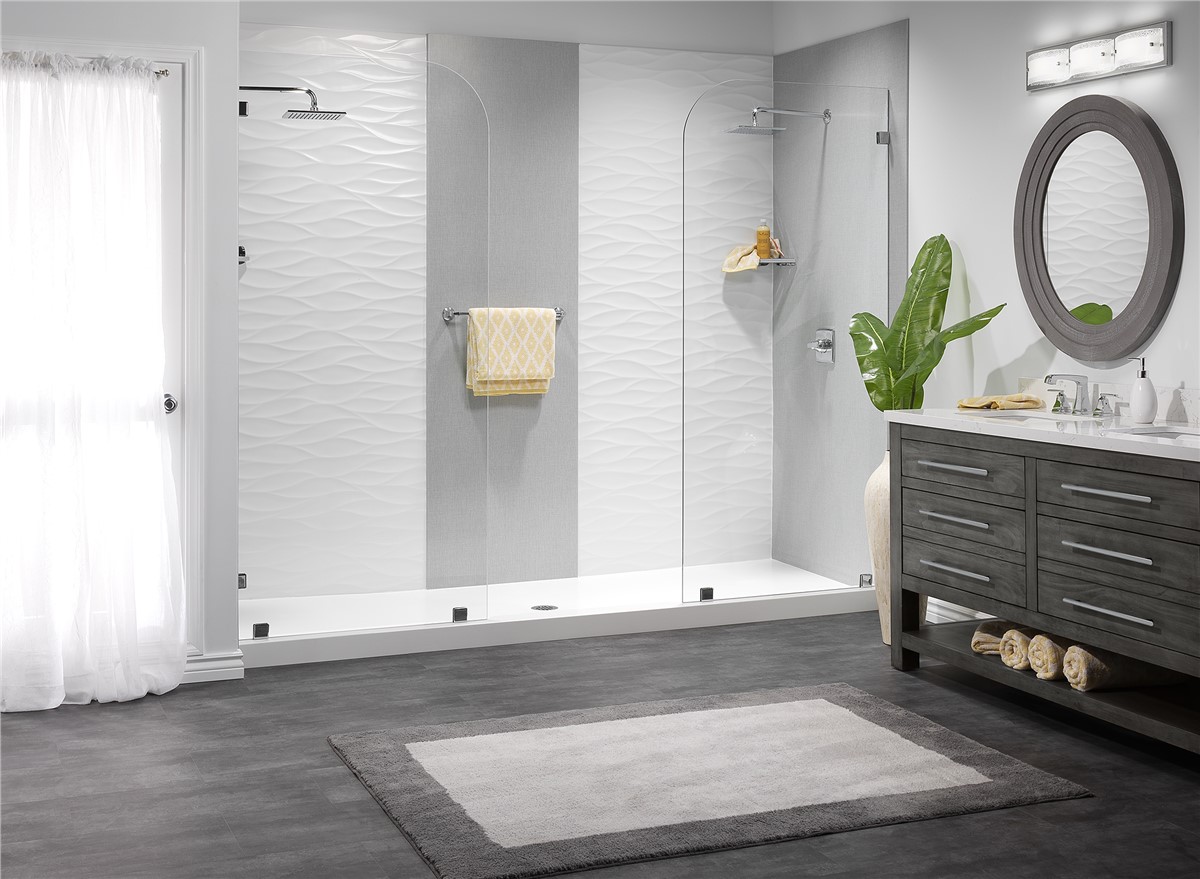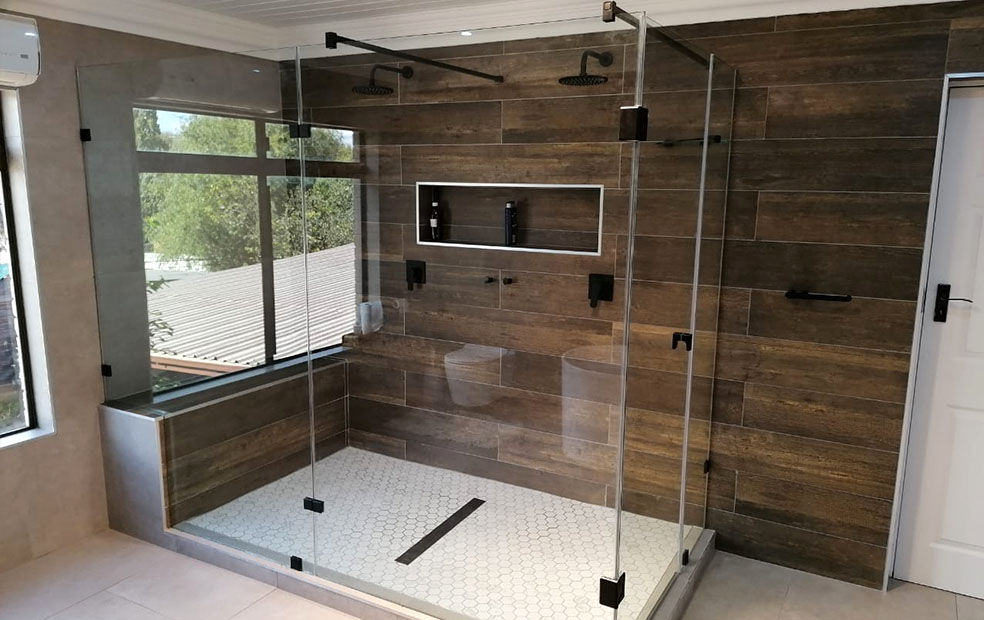They are making several good pointers regarding How to Build a Shower Enclosure for Your DIY Bathroom in general in the article directly below.

A successful shower installation requires careful planning and a great deal of work. Most of the times, you will require to do 3 types of jobs: framing wall surfaces, mounting the plumbing, and also completing wall surfaces.
Preparation
Firstly, you need to decide on the type of shower that you wish to mount. It is essential to identify whether the chosen shower is capable of managing certain systems as well as can control a secure degree of water through the boiler. Most shower systems nowadays are made to be adaptable to various water stress (such as stored hot water as well as chilly keys).
It is likewise crucial to think about the water stress as well as the planning of the piping and also drainage for the shower
Various Sorts Of Shower Units
- Push-on Mixer: The pipe and spray parts of the push-on mixer shower device can be connected to the bath tap according to your demand, and the water temperature can be readjusted via the taps. Push-on mixers are cheap as well as incredibly basic to set up. Nonetheless, although the hose connection is easy, it is quickly removed. Furthermore, it is troublesome to change the temperature.
- Bath/Shower Mixer: The tube and also spray of this kind of shower are integrated with a bath mixer tap, and also the temperature level can be changed through the bathroom faucets. It is a very affordable choice and no added plumbing is included. Nonetheless, the bath/shower mixers also deal with troublesome temperature level control alternatives.
- Manual Mixer: The pipe and also spray of a manual mixer shower system belong of the wall unit as well as the hot and cold water materials are connected to a solitary valve The temperature level and pressure of the water are controlled with either one or a range of handles (in more costly showers). Although temperature control is a lot easier in manual mixer types, they are more costly than the formerly stated mixers. They also require additional plumbing of hot and cold water pipelines.
- Thermostatic Mixer: The tube and spray of this shower type are a part of the wall device and also the cold and hot water materials are linked to a single valve here also. It is full with a built-in stabiliser to self-adjust the water temperature level as well as to stop it from ending up being too hot. Among the greatest advantages of a thermostatic mixer shower type consists of convenient temperature level control. Nonetheless, it is the most costly of the various mixer options.
- Power Shower: A power shower is a solitary device including an effective electric pump that is capable of changing both the water stress and also temperature level. This sort of shower can be fitted if there is supply of water from a cold water cistern and a warm water cylinder. A power shower makes the change of both stress and also temperature simple. On the other hand, it is unsuitable for water heated up straight by the shower or where the water is provided by a mix central heating boiler under keys stress.
- Electric Shower: An electrical shower is plumbed into a keys cold water supply and it warms the water electrically. It is important to keep in mind that for this shower type to be installed, the keys pressure requires to be a minimum of 0.7 kg/sq centimeters (10lb/sq in). The system allows the temperature level and stress to be readjusted through a handle. Designs with temperature level stabilisers are better as they stay untouched by other faucets somewhere else in use within the home. A significant downside of electric showers is that the control knob just permits the choice of heats at much less pressure, or lower temperature levels at a better pressure. This is problematic in the winter when the spray is frequently weak as well as the mains water is chillier. Nevertheless, this issue is dealt with in some models which are offered with a winter/summer setup.
Technique
Relying on the type of shower you desire to install, the shower head have to either be suited order to avoid its contact with the water in the bath listed below or the base tray, or it has to have a check shutoff.
Prior to starting, it is recommended to mark the positions of the shower head and control, and also to intend the pipe-work included. Additionally, the drainage system to get rid of the waste water will certainly require to be intended. Both settings of the cable course and the shower button will certainly likewise require to be thought about if an immediate or electrical shower unit is being mounted.
Use the direction overview given with the shower unit to fit the shower control.Before fitting the pipes that will provide the water to the shower system, it is important to cut off the water system. In order to shield the pipes, they need to be given a water resistant covering and likewise fitted with separating shutoffs. The pipelines can then be hidden into the wall as well as smudged over to neaten the general look.
Fit the base tray, shower head, and also installations.
Attach the major shower control to the pipelines that will certainly be providing the water (This might need a female screw string adapter).
Reconnect the water supply and also test the pipes for any leaks, as some might need firm.
If you are setting up an electrical shower, bear in mind to switch off the electricity supply prior to making any electric connections. When these connections have actually been made (there should be support within the instruction manual), the power supply can be switched back on.
Changing Water Stress to Suit Your Shower
The cold water tank can be raised to a greater height (occasionally as low as 150mm (6inches)) by installation a strong wood support beneath it - potentially made up of struts as well as blockboards. If you choose this option, the major and circulation pipelines will likewise need to be raised to fulfill the brand-new height of the reservoir.
Alternatively, a booster pump (a single pump or a dual/twin pump) can be fitted. Whichever kind is chosen, it has to be attached right into the power supply in order to operate.
Piping and Drainage
It is best to utilize 15mm size supply pipes, and make the go to the shower as brief and also straight as possible so as to preserve optimal stress as well as reduce warmth loss. Furthermore, by reducing making use of elbows for pipe corners, you can reduce the resistance in the circulation of the water system. You can attain this by flexing the pipes instead.
A Lot Of Usual Errors
- Breaching or neglecting regional code restrictions.
- Making use of pipes that are too tiny.
- Attaching copper to galvanized without utilizing a brass or dielectric fitting in between both.
- Not utilizing tape or pipe compound at threaded joints.
- Not leveling your fixtures when mounting them.
- Not setting up an air void filling up for fixtures.
- Reducing supply stub outs as well brief to install the shutoff valves onto after the ended up wall is in location.
- Not correctly straightening tubing right into fittings or quit shutoffs. (Requiring the nut onto the compression ring at an angle when the tubes is at an angle will create a leak.).
- When transforming the water back on in your house, always run the outdoors tube shutoff or purge your bathrooms to bleed dirt as well as air from the lines. This debris can create troubles in your sink taps as well as other plumbing trim.
How Do You Install a Shower? Follow This Guide
Installing a Shower at a Glance
- Tools & Materials: Level, electric drill, caulk, hole saw, cedar shims, shower unit
- Step 1: Drill pilot holes
- Step 2: Prep fixture holes
- Step 3: Move unit into place
- Step 4: Caulk corners and base
- Step 5: Attach door
- Step 6: Install shower pan
Whenever plumbing is involved in a DIY project, people worry about what might go wrong. The truth is that installing a shower isn’t that complicated, and you can save a lot of money by doing it yourself. You shouldn’t need to make any alterations to your plumbing to complete the job, and most of the tools you need will be provided in your new shower kit.
Can I Install a Shower Myself?
Even if you’ve never installed a shower before, you’ll find this to be a project that is perfectly suited for DIYers with a moderate level of experience. Whether you're doing a bathtub conversion or installing a new stall, most of what you need comes in shower kits that you can purchase from a hardware store. The first thing you need to do is determine what type of shower stall you want.
Single-panel stalls are the easiest to install because they come preassembled. All you need to do is put them in place. Multi-panel showers require a few additional steps, but you’ve got more control over the appearance of your unit. Multi-panel units are also much easier to handle if you’re going to do the installation without any help.
Be sure to take all appropriate safety precautions, such as wearing eye protection and gloves. When you’re removing or installing a shower unit, you might kick up debris that could hurt your eyes. You’ll also need to work with equipment that will get extremely hot, so be sure to have safety gloves handy.
Tools and Materials
- 2- to 4-foot level
- Electric drill with a 1/8-inch drill bit
- Caulk
- 2-inch hole saw
- Cedar shims
- The unit itself
Before You Begin: Prep the Space
It’s highly important to measure your space accurately before putting the stall in. Measuring from the floor upward and from each corner outward will ensure you’ve got the right measurements. What you’re looking for is where the plumbing apparatuses are going to come through the stall. Transfer these measurements over to the back of your unit by drawing the locations of these holes using a pencil or marker.
Pull out your old shower and make sure to scrape off all the old caulking. Be thorough because you want to work with smooth surfaces for the best installation. Once you’ve pulled out your existing shower, you need to make sure that the floor is clean and dry. The best way to clean debris is with a shop vacuum, as it’ll soak up water and dirt together.
If you’re experiencing any plumbing issues, such as low water pressure, this is a perfect opportunity to solve them. Make sure that the pipes themselves are not in need of patching and clean your showerhead. When you turn the water back on after your project, check the pipes for signs of wear or disrepair. Anything beyond minor repairs should be handled by a plumber, and this is the best time to bring in a professional.
If the floor has any moisture at all, don’t proceed until it’s completely dry. The last thing you need is for the floor to rot or invite mold and mildew into your base. Once everything is dry, apply waterproof wallboard to the walls. This can be attached with screws or nails, then sealed with caulk so that water doesn’t seep into any crevices.

I am very occupied with How to Install a Shower Enclosure and I am assuming you enjoyed the entire page. Sharing is good. Helping people is fun. Thank you so much for going through it.
Click Here
Comments on “Installing a New Shower Fixture: Expert Advice for DIY Enthusiasts”